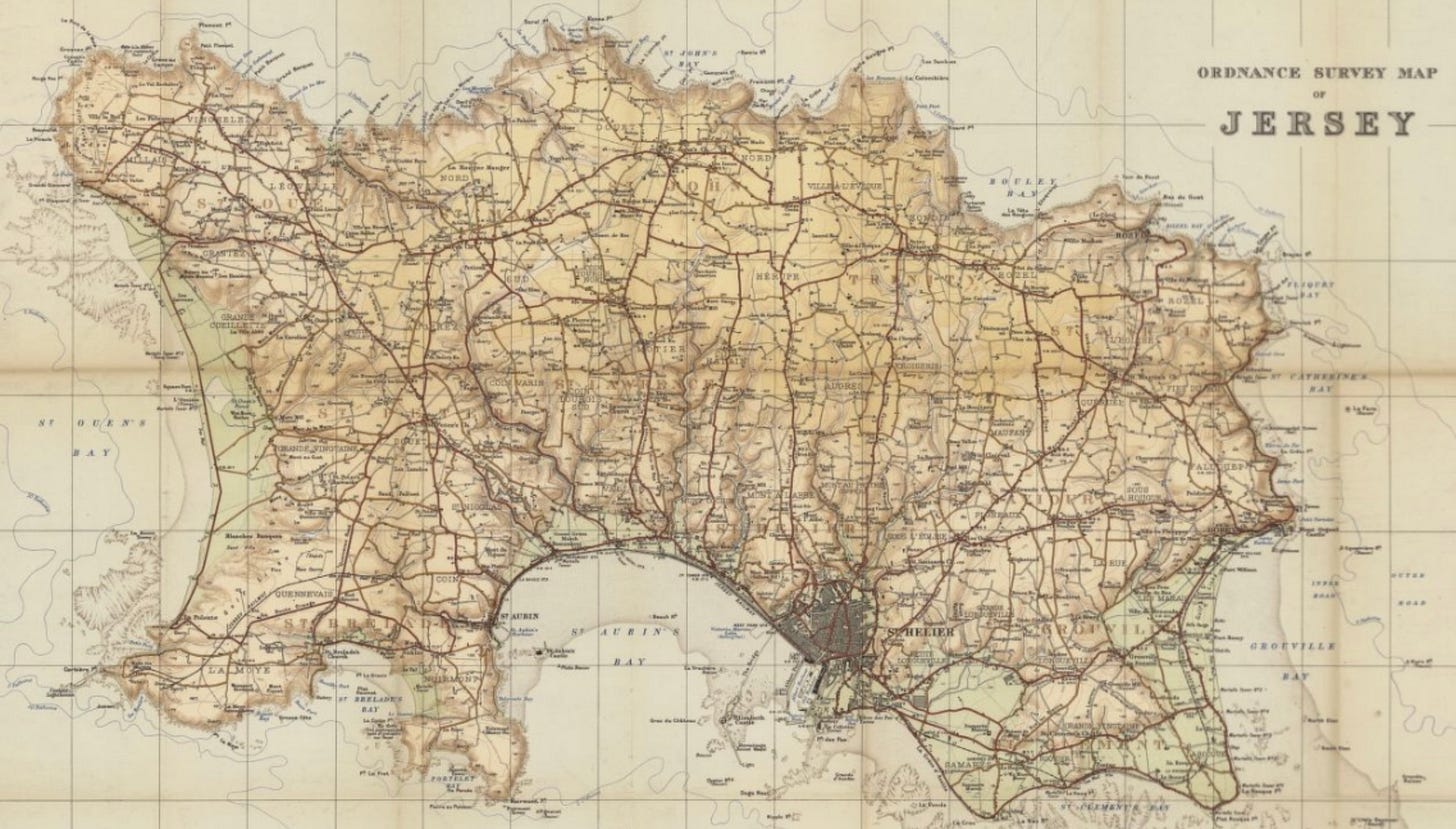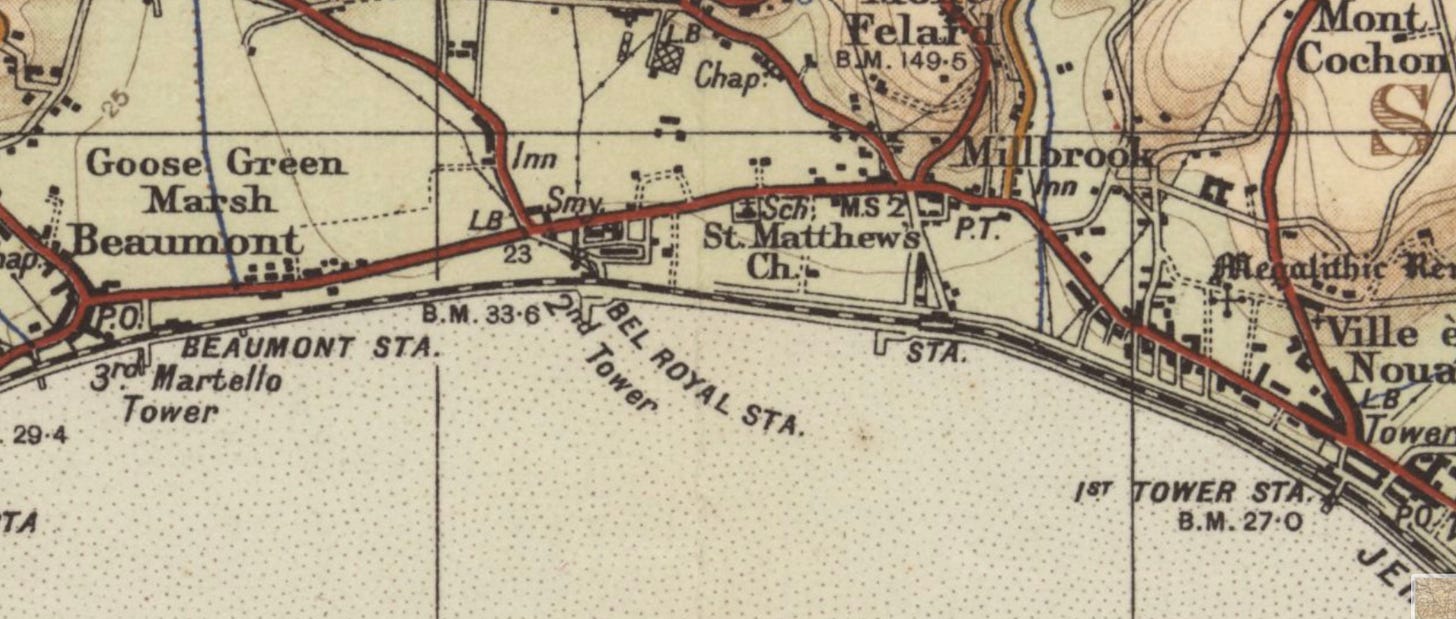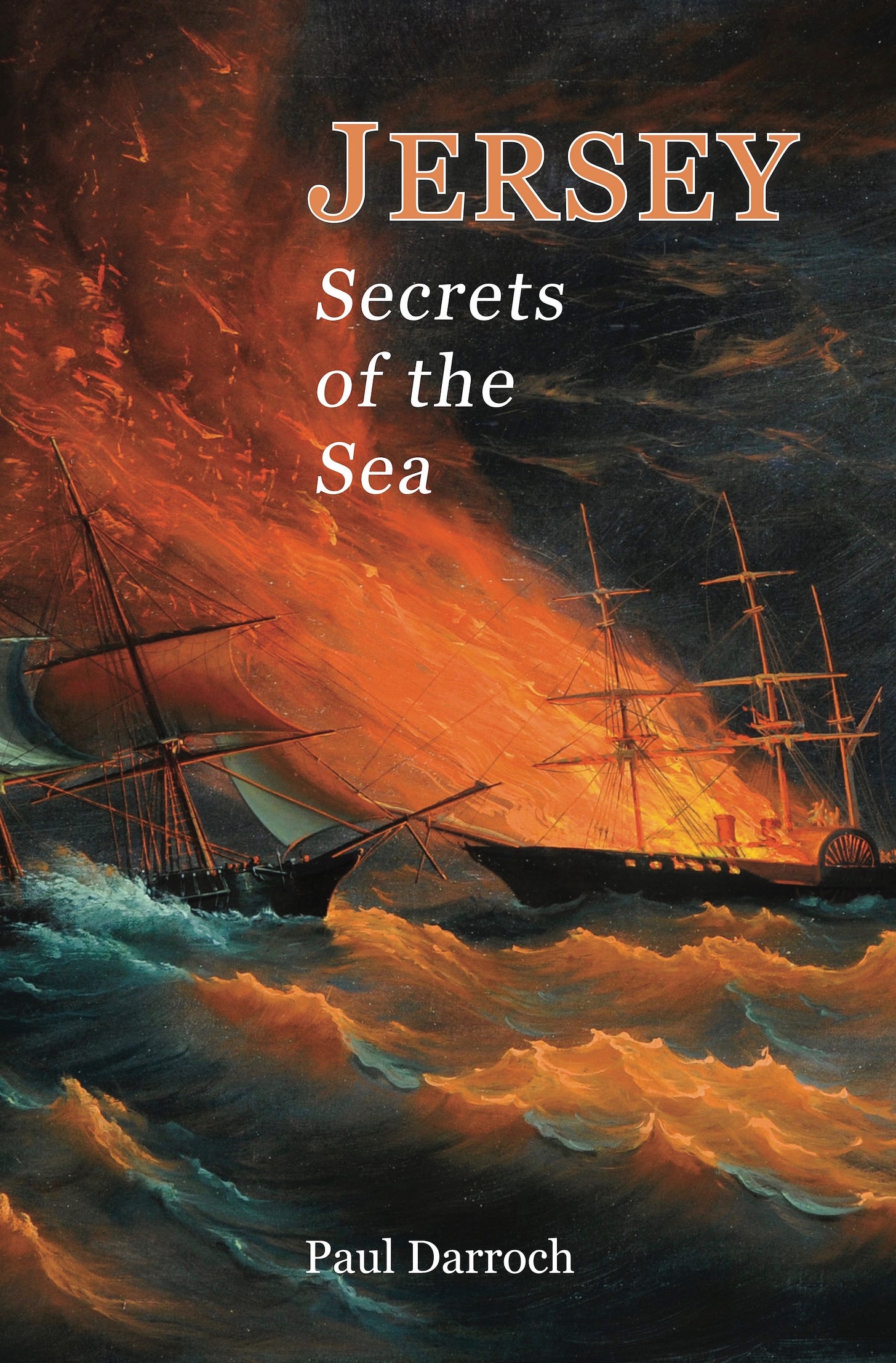Welcome to another episode of The History Islands. This week we begin a new series on Jersey’s lost landmarks - starting with the story of a vanished school in Millbrook.

The Glass Church is an astonishing, sublime masterpiece. But in the very beginning, in the place where the mill brook flowed into the open sand dunes of St Aubin’s Bay, there was just an empty field. It was on 17 February 1840 that this was purchased by the Rectors of St Lawrence and St Peter from Mr William George Le Gallais for the fine total of 62 pounds, 8 shillings and sixpence. They had purchased a vergée of land, bordered on the north by the Grande Route Militaire that runs from St Helier to St Aubin, for the express purpose of “building a chapel of ease, to celebrate divine worship following the rites of the Anglican church”.
So, in the Victorian age before the glass, before the masterpiece, there was just a nondescript chapel with a mixed school attached, to serve the burgeoning community of Millbrook.
The St Matthew’s school logbook, painstakingly completed by the incumbent head teacher for 26 years, is a treasure trove of insight into the hard times of a scrappy, struggling school, clinging to the skirts of its mother church, striving to educate generations in this harsh land where the sand dunes met the potato fields. Back in 1877, Her Majesty’s Inspector had observed, “the school appears to be destitute of organisation” and noted that, given the 57 boys amongst the children, “urinals are absolutely necessary”.
That year the school languished leagues behind its parochial counterparts. The parental fee contribution was means-tested, and seven out of ten pupils fell into the two lowest contribution brackets. Millbrook remained poor for decades. In August 1894, the Constable of St Lawrence, Edward Voisin, published a notice lambasting street begging from urchins, adding that “well-thinking people are invited to support all measures adopted for the suppression of this growing moral evil”.
So, as the logbook opened in 1894, eighty-eight little children were jammed like sardines into a dilapidated single room, nineteen feet square, which stood on the site of the old vicarage behind the church. We can picture this gaggle of Victorian infants, the ragged children of potato farmers, singing their designated School Songs for the year by rote: The Little Hero, Sweet and Low, Raindrops, Little Pilgrims and Christmas Carol. The repetitions drilled into the infants are preserved in time here like a message in a bottle sent from a long-dead world, setting the horizons of their rural Jersey lives: “The Cow, the apple, a horse, a farm-yard…”
Her Majesty’s Inspector’s reports reveal a dismal litany of academic failure. “Discipline, I am glad to say, is now satisfactory. I wish the results of the Examination were the same”. Arithmetic in the higher classes is pronounced “a complete failure”. The final judgement is damning: “Unless the whole School improved very much, I fear I shall have next year to pronounce it inefficient”. The inspector lamented “the disgracefully irregular attendance of the younger children”.
It was always a struggle to retain the attention of these unruly country children, especially during the peak planting season of February and the harvest time of May. “An increasing number are potato picking”, lamented an entry on May 18th, 1894. The surroundings did not inspire scholarly effort in any case. The link between intellectual, moral and physical squalor was always self-evident to the late Victorian mind. “The School Room must be made lighter… more ground must be procured”, argued the Inspector.
The work was done, and painstakingly and slowly, progress was at last being made at St Matthew’s. The academic tide finally began to turn and the 1899 report at last offered encouraging news. “Discipline and drill are good. Writing and Needlework are zealous”. The Church inspectors were even more effusive, praising the “intelligent and practical grasp of a full syllabus”. By the time J Edward Carter took over the headship that year, the school had swelled to an average of 142.5 pupils.

The world was changing, and the soporific peace of the Victorian age, was coming to an end. On October 15, 1900, the Head Teachers of Jersey held a conference with Inspector Burrows. “He laid a great deal of stress on the importance of drill – military drill – for boys”. Carter proposed that “a sergeant or other military man” be employed to teach drill, and his suggestion was enthusiastically endorsed.
Instructor Sergeant-Major Davis duly started training at the school on March 8, 1901. The shadow of the trenches, of the Great War, was just around the corner.
School conditions were still barely imaginable by modern standards. As the icy November of 1901 set in, the log-book entries are increasingly desperate. “We want a stove badly, for there is only one fireplace”. It was December 20 before an ancient, reconditioned stove was finally granted.
The Millbrook area remained an isolated farming community, with its residents critically dependent on its cash crop of potatoes. In June 1902, the Headmaster lamented, “the smell of manure in a field adjoining the school is so bad that I have been obliged to send the children home”. That autumn was also the end of a golden era for St Matthew’s School. Carter left clutching “a biscuit barrel in electroplate” as a leaving gift and a certain Mr D M Jones assumed the headship. The next ten years would witness St Matthew’s School suffer a vicious downward spiral of decline.
Rural poverty continued to blight performance, as evidenced in the ever more fleeting logbook records. In November 1907, a child over seven presented herself at the School. She had never darkened a school door in her life. For all of Jersey’s reputation as a healthy and balmy resort, the scourge of infectious disease also remained acute, with measles, a chicken pox epidemic, whooping cough and typhoid all recorded in 1907.
In that dark year of sickness, the Inspectors dealt a crippling blow to the School’s reputation with a thoroughly damning report. The old problems of unruly children and academic underachievement had clearly returned with a vengeance. “Discipline is lax in the upper division … the boys have little application and cannot be trusted to do any work by themselves”.
The horizon was darkening outside the school gates too. Great Power rivalry was now reaching its zenith, and by 1909 the Assistant Teacher was forced to spend two mornings a week on musketry practice.
The School continued to flounder, and on July 12, 1912, the Headmaster was formally served his notice. Jones protested the injustice, and offered to work on a nominal salary, but to no avail. His employment was terminated on 31 October and he lost his residence above the school on the same day. One of his last piquant entries in the logbook was on 26 August 1912: “Owing to hydroplane races, it was impossible to re-open school this morning”. Just beyond the schoolhouse, the very first aeroplane had landed in Jersey.
The 1912 report reveals a school sunk deep in decay. The Inspector appeared especially revolted by the scourge of graffiti “The doors are covered both inside and outside the School, with scribblings in pencil and ink. The classroom walls, the cloakroom, the offices, the seats of almost every available space also contain these scribblings”.
The writing was on the wall for the Victorian age, and time was also running out for the little school in the shadow of the chapel. In 1912, St Matthew’s underwent radical surgery, with all pupils over ten reallocated to First Tower School. As the dust cleared after the war, barely twenty-three scholars were still limping on at St Matthew’s Mixed School. The final logbook entry is on January 20, 1920. “School closed today for measles. It will not re-open”. The remaining pages are blank. The Victorian dream was over.
We will continue this tour of Jersey’s Lost Landmarks in the next newsletter.
You will find my books at retailers including Amazon, WH Smith on King St, Waterstones on Queen St and at the Harbour Gallery.
© Paul Darroch 2024
Music: Chariots by Gavin Luke, courtesy of Epidemic Sound.





